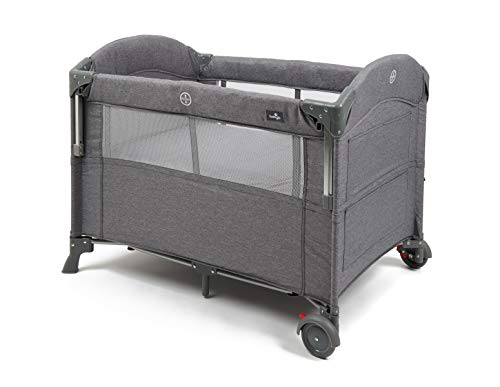The Benefits and Considerations of Bedside Co-Sleeping Cribs
As parents browse the early months of their child's life, ensuring a safe and comfortable sleeping plan is frequently at the forefront of their minds. Among the different alternatives available, bedside co-sleeping cribs have actually acquired appeal for their intrinsic blend of availability and security. This post explores what bedside co-sleeping cribs are, their benefits, considerations for selecting one, and responses to regularly asked concerns.
What Is a Bedside Co-Sleeping Crib?
A bedside co-sleeping crib is a sleeping space created to be connected to an adult bed, offering a proper and safe environment for infants. These cribs typically feature adjustable heights and protected accessories that enable parents to easily reach their sleeping baby while likewise guaranteeing that the baby has their independent sleeping space.
Offered the growing discussion around the advantages and threats of co-sleeping, these specifically created cribs aim to strike a balance between keeping the baby close for comfort and ensuring their safety.
Advantages of Bedside Co-Sleeping Cribs
Increased Convenience
- Bedside co-sleeping cribs make it possible for parents to be close to their baby throughout the night. This proximity is particularly useful for breastfeeding mothers, who can feed and comfort their child without leaving their bed.
Security Features
- A lot of co-sleeping cribs come equipped with functions such as safe accessories, breathable mesh sides, and durable frames. These safety elements help to prevent accidental suffocation or rolling over onto the baby.
Promotes Bonding
- The closeness of a co-sleeping plan might promote a more powerful emotional bond in between parent and child, enhancing sensations of security and convenience for both celebrations.
Ease of Monitoring
- Parents can quickly monitor their infant during sleep, resulting in reduced stress and anxiety and supplying peace of mind.
Encourages Healthy Sleep Habits
- Research suggests that co-sleeping can motivate babies to develop self-soothing skills, causing improved sleep patterns with time.
| Advantages | Information |
|---|---|
| Increased Convenience | Easy access for feeding and convenience throughout the night |
| Safety Features | Strong accessories and breathable products |
| Promotes Bonding | Closeness boosts emotional connection |
| Ease of Monitoring | Parents can keep a careful eye on their baby |
| Encourages Healthy Sleep Habits | Assists infants find out to self-soothe |
Factors to consider When Choosing a Bedside Co-Sleeping Crib
When choosing a bedside co-sleeping crib, parents ought to bear in mind several elements:
Safety Standards
- Make sure that the crib fulfills current security requirements set by regulatory bodies. Search for accreditations and safety rankings.
Size and Adjustability
- Consider the size of the crib and whether it can change to the height of your bed. A perfect crib should fit snugly versus the adult bed.
Reduce of Use
- Take a look at functions such as removable sides, collapsible frames, and ease of assembly and disassembly.
Material Quality
- Buy cribs made from non-toxic, top quality products that promote sturdiness and security for long-lasting use.
Visual Compatibility
- While performance is crucial, it's likewise essential that the crib complements the bed room decor.
Leading Bedside Co-Sleeping Cribs in 2023
| Crib Model | Features | Rate Range |
|---|---|---|
| Chicco Next2Me | Adjustable height, breathable mesh sides, easy folding | ₤ 200 - ₤ 300 |
| Baby Delight Snuggle Nest | Removable side, portable, consists of a nightlight | ₤ 150 - ₤ 250 |
| HALO Bassinest | Rotates 360 degrees, adjustable, includes soothing noises | ₤ 250 - ₤ 400 |
| Lully Sleep Nest | Convertible design, detachable bed mattress, environmentally friendly materials | ₤ 180 - ₤ 280 |
Frequently Asked Questions About Bedside Co-Sleeping Cribs
Q1: At what age is it safe to use a bedside co-sleeping crib?A: Bedside co-sleeping cribs are generally safe for infants from birth until they can pull themselves up, which is normally around 6 months of age. Constantly seek advice from with your pediatrician for tailored guidance.
Q2: Are bedside co-sleeping cribs better than conventional cribs?A: This can depend on personal choice and way of life. Bedside co-sleeping cribs offer instant availability while keeping a different sleep space for the infant. Traditional cribs, while likewise safe, need parents to get up to attend to the baby.
Q3: Can I use bedding in a bedside co-sleeping crib?A: It is normally suggested to keep bedding minimal. A fitted crib sheet is adequate to avoid suffocation risks. Extra blankets, pillows, and toys should be prevented.
Q4: Do I need to find special bedding for a co-sleeping crib?A: Most co-sleeping cribs use standard crib-sized mattresses, so finding bed linen must not be an obstacle. Always confirm Bedside Crib With Wheels before purchasing.
Q5: Can a bedside crib prevent SIDS?A: While bedside co-sleeping cribs are developed to boost security, they do not ensure defense against Sudden Infant Death Syndrome (SIDS). To reduce SIDS risks, follow safe sleep guidelines: location the baby on their back, guarantee a company bed mattress, and prevent sleep on soft surface areas.
Bedside co-sleeping cribs act as a practical compromise in between co-sleeping and guaranteeing an infant's security. They supply unequaled convenience while maintaining the integrity of independent sleep. However, possible purchasers should thoroughly consider their options based upon safety, size, and use requirements. As constantly, parents are encouraged to seek advice from doctor when making decisions about their kid's sleeping arrangements.
In conclusion, a bedside co-sleeping crib might be an important addition to any parenting journey, mixing safety with distance to develop a nurturing sleep environment.

